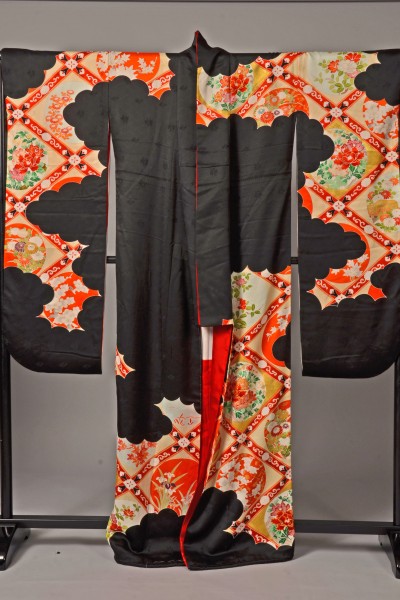· 3 min read
‘Japan and Fashion’ opens Feb. 24 at Hillestad Gallery

“Japan and Fashion: Influence and Impact” will open Feb. 24 in the Robert Hillestad Textiles Gallery.
The exhibit, curated by Barbara Trout, professor of textiles, merchandising and fashion design at UNL, features Japanese-influenced garments from the Department of Textiles, Merchandising and Fashion Design’s historic costume collection, along with traditional Japanese garments on loan for the exhibition. The exhibit is devoted to the interface between traditional Japanese dress and contemporary Western fashion.
More than 18 traditional kimonos in various shapes and sizes are included, along with a significant collection of obis. This feature of the exhibit is due to a generous gift from Kathryn Ericksen Lohr, an alumna of the UNL College of Education and Human Sciences, who lived in Tokyo with her husband James in the late 1980s and early 1990s. While there, she collected many kimonos and met renowned Japanese fashion designer Hanae Mori, resulting in the inclusion of several Mori garments in the show. Mori was first in a line of important Japanese designers to gain entrance into the Chambre Syndicale de la Haute Couture Parisenne, making her first showing in Paris in 1977.
The exhibit also includes an ornately embroidered wedding kimono acquired by the Thomas Woods family of Lincoln in the late 1970s and donated to the collection by Averi Woods. Items from the collection of Omaha textile collector Jay Rich round out this unique exhibition.
The works in the show are marked by brilliant colors, rich embroideries, elegant brocades and exotic patterns. The contemporary segment of the exhibition contains modern fashions that range from the conservative to the avant garde. Designers such as Ralph Rucci, Issey Miyake and Rei Kawakubo are represented. Japanese influence in contemporary fashion hinges on three distinct elements that are depicted in the exhibition:
A critical regard for surface development of the textiles, ranging from intricate weave structures to shibori-dyed textiles to industry-driven high tech fabrics.
Emphasis on fine craftsmanship. The high level of craft inherent in many forms of Japanese dress is seen in the hand stitching of the kimono and in embellishments that distinguish many of these garments.
The Japanese emphasis on structure that impressed itself on modern designers’ sensibilities as early as the 1880s. In contrast to the Western approach of cutting and stitching fabric to echo the shape of the body, the Japanese aesthetic involved wrapping the fabric around the form to envelop the body. The articulation of space between the fabric and the body distinguishes the kimono from Western garments.
Other elements played out in contemporary fashion are the emphasis on the simple structural lines, the suggestion of the obi, the use of the large sleeve shape and the development of roomy silhouettes for anything from coats to jackets.
The Hillestad Gallery is on the second floor of the Home Economics Building, 35th Street north of East Campus Loop. It is part of the Department of Textiles, Merchandizing and Fashion Design in the UNL College of Education and Human Sciences. The gallery is open 8:30 a.m.-4 p.m. Monday-Friday and by appointment. Admission is free. For more information, call 402-472-6370 or go to http://textilegallery.unl.edu.







